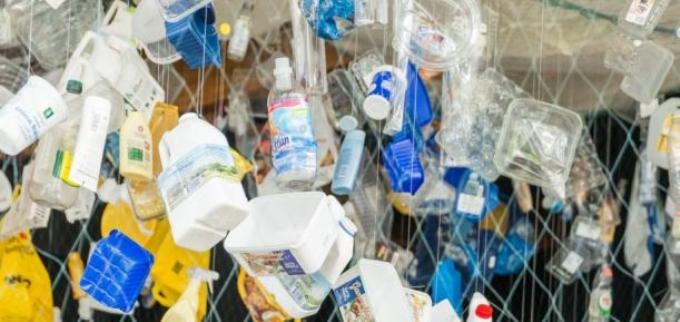Dec 20 2018
According to a new study from Lund University, there is a significant risk that plastic waste in the environment discharges nano-sized particles called nanoplastics. The researchers investigated what happened when takeaway coffee cup lids, for instance, underwent mechanical breakdown, in an effort to mimic the degradation that occurs to plastic in the ocean.
 Image credit: Inger Ekström
Image credit: Inger Ekström
Plastic forms the major part of all marine debris. Estimations have shown that 10% of all plastic generated worldwide ends up in the sea. This plastic waste is subjected to mechanical as well as chemical degradation. The UV rays from sun play a role in the degradation, as do waves, which make plastic waste to grind against stones on the water’s edge, against other debris or against the sea floor.
Is there a risk that this plastic waste breaks down to the degree that nanoplastics are released? The research community is divided on whether the degradation process halts at slightly larger plastic fragments—microplastics—or essentially continues and produces even tinier particles. The research scientists have presently examined this matter by exposing plastic material to mechanical degradation under experimental conditions.
We have been able to show that the mechanical effect on the plastic causes the disintegration of plastic down to nano-sized plastic fragments.
Tommy Cedervall, Chemistry Researcher, Lund University.
The study links to the major problem of what happens to plastic in the environment and how plastic can impact humans and animals. Nano-sized particles of plastic are a few millionths of a millimeter, i.e. very small particles, too small that they have been shown to reach far into the bodies of living organisms.
The previous year, in an earlier study from Lund University, scientists revealed that nano-sized plastic particles can enter the brains of fish and lead to brain damage which possibly disturbs the behavior of fish. Although the study was conducted in a laboratory setting, it signifies that nanoplastics can cause harmful effects.
There has been an emphasis of several other recent studies from the research community on microplastics and their growing distribution among organisms. Presently, strong efforts are taken to also detect nanoplastics in the environment.
It’s important to begin mapping what happens to disintegrated plastic in nature.
Tommy Cedervall, Chemistry Researcher, Lund University.